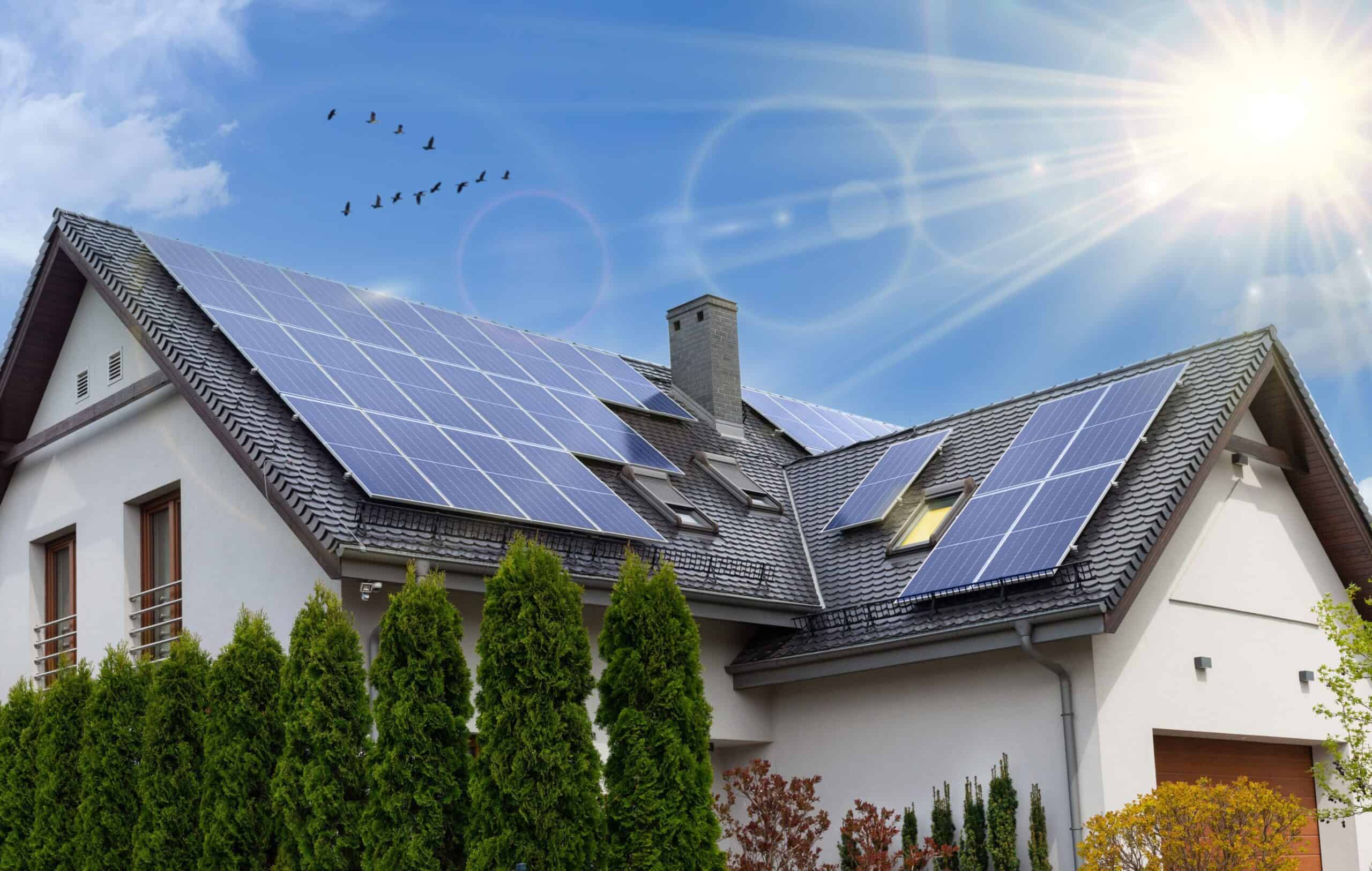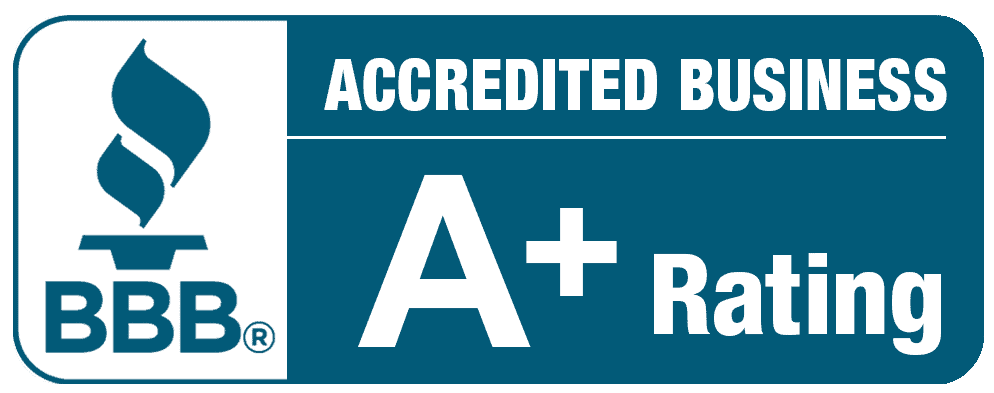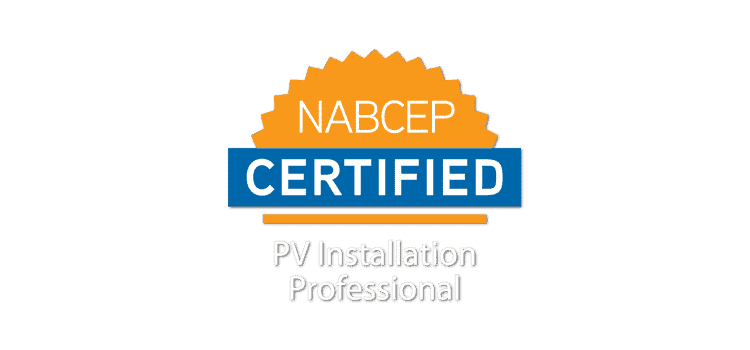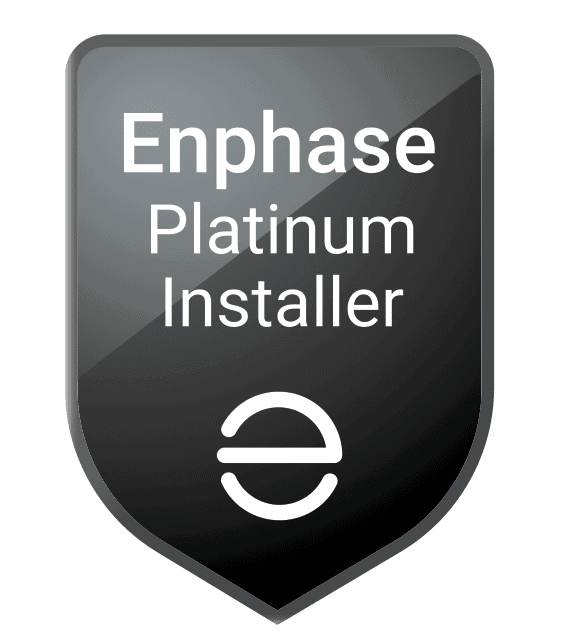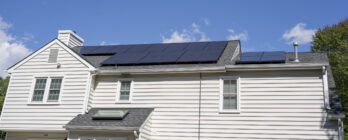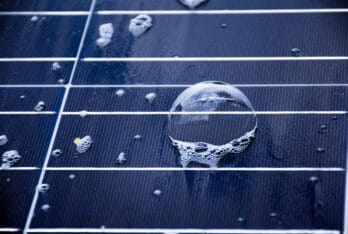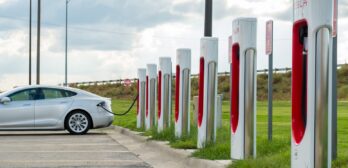What Is The Best System For Your Home?
Although 90% of all solar cells are made from the same base material, silicon, not all solar panels are the same. With the ever-advancing technology in solar panels, there is now an even bigger variety to choose from. Buyers today should take into consideration details such as price per watt, efficiency ratings, and manufacturing warranties.
There are generally four different types of solar panels commonly used in residential properties. Learn about their characteristics to find out the most suitable one for your needs
Monocrystalline, Polycrystalline, Thin Film and Heterojunction
The four different types of solar panels primarily used in residential settings include monocrystalline, polycrystalline, thing film, and heterojunction.
Monocrystalline silicon panels, or single-crystalline panels, are known for their uniform and even appearance. The silicon used is of the highest quality and purity, and they are made of single-crystal wafer cells cut from cylindrical crystal slabs. They have a deep blue color (due to the fact that they are made from a single continuous ingot) and, although they can come in different shapes, are usually cut into squares or circles (to reduce material waste). They are on the higher end of the scale cost-wise, but they can produce more power than the other models.
PROS
- Higher efficiency rates, even when there’s not a lot of light
- Made from high-quality silicon
- Require less space to produce the same amount of energy than other panels
- 25-year manufacturing warranty
- Most durable panels
CONS
- Higher-end of price spectrum, due to the high-quality silicon used
- If exposed to shade, dirt or snow, electricity production can considerably decrease.
- For this reason, we recommend micro-inverters instead of central string inverters. The production of the panel itself can be efficient given the cylindrical shape of the cells results in unused surface area on most panels.
Polycrystalline silicon panels, often called multi-crystalline panels due to their random crystal formation, have a more fluid appearance with different shades of blue. They are made from a square block of silicon, melted and poured into a mold, then cut to minimize silicon waste. These panels are less expensive than monocrystalline panels, but they also have a lower efficiency level.
PROS
- Less waste during production meaning lower cost
- They can have lower heat tolerance than the monocrystalline panels making them less efficient in higher temperatures (this is largely not an issue for regions outside the desert Southwest)
CONS
- Less efficient as made with less pure silicon (13/16% efficiency rating)
- More panels are needed to produce the same amount of energy as monocrystalline panels
Thin film panels are the most affordable panels in terms of cost, but they are also known for the lowest 7/13% efficiency rate and lack the durability of other panels. As a result, they require more space to produce the same amount of energy as the polycrystalline or monocrystalline silicon panels. These panels are easily made by laying photovoltaic materials on a metal or glass sheet, a fairly inexpensive process. The materials used are cadmium telluride (CdTe) and amorphous silicon (a-Si). The first is an economical thin film technology, the second allows panels to be shaped in any way required.
This method is ever-evolving and the technology is constantly improving, and due to the ease of the production, these panels are the most cost-effective solution for those wanting to access solar energy on a smaller budget.
PROS
- Shade and higher temperature do not affect energy production as much as the other panel types
- Easy to produce and cheaper to manufacture
- Flexible thin film that can be used in various creative ways
- Less expensive than other panels thus making it more affordable
CONS
- Requires a lot of space so not ideal for residential properties
- Cost of entire solar system including support structures and wires can be quite high due to the amount of space needed
- Shorter warranty due to the questionable durability of the panels
Heterojunction silicon panels, often referred to as HJT cells, combine two different technologies into one cell: a crystalline silicon cell placed between two layers of amorphous “thin film” silicon.
In HJT panels, the middle layer of monocrystalline silicon does most of the work of turning sunlight into electricity. On top of this middle layer is a layer of amorphous thin-film silicon that captures some sunlight before it hits the crystalline layer, and it also grabs some sunlight that reflects off the layers below. This top layer is very thing and allows most of the light through, but it still generates enough additional electricity to justify the additional expense.
On the backside of the crystalline silicon is another thin-film layer. It captures sunlight that passes through the first two layers. If the panel is a glass-on-glass design with a transparent rear panel, this rear thin-film layer will add a significant amount of electricity due to sunlight that’s reflected off the roof.
By building a panel out of a sandwich of three different photovoltaic layers, a heterojunction solar panel can reach efficiencies of 21% or higher. This is comparable to panels that use different technologies to achieve high performance.
PROS
- Higher efficiency than most single-technology panels
- Potentially lower costs compared to other technologies used to improve performance
- Lower temperature coefficient (meaning it can function in much hotter temperatures)
CONS
- Higher initial costs
- Only three companies currently manufacture HJT panels: Panasonic, REC and SolarTech
Which Panel is Right For Me?
Needless to say, anyone considering solar panels for their home will have to balance a number of factors including the costs, efficiency, and resiliency to determine what is the best fit. In addition, it’s important to purchase panels from a reputable manufacturer regardless if they produce panels domestically (which are few and far between) or internationally. To ensure you cover all bases, check out our post regarding the top solar panel manufacturers.
Solar Panel Costs: What Do I Need To Know?
Cost plays a big part when choosing the best solar panel for your needs. Prices can vary, starting at roughly $150 to $350 per panel. But panel costs are just one factor to consider. As with other major home appliance purchases, efficiency and durability are also key factors to consider. We recommend considering the following six factors before committing to a solar panel installation:
Type of Panel:
larger panel doesn’t always mean it will produce more electricity, but it could cost more. Make sure to compare panels not by size or output but rather cost per megawatt.
Type of Inverter
There are two types of inverters to consider: string and micro. String inverters link panels together in groups, with each group feeding into one inverter. String inverters are more cost effective, and are a popular choice, but the problem is that if one panel breaks then the entire “string” is less efficient. The alternative is a set of micro inverters. In this scenario, each panel has a micro-inverter so that each operates essentially on its own. This is a great scenario for roofs that are partially shaded during the day and/or panels placed in areas where there is more inclement weather; however, the costs are a bit higher.
Roof Type
Solar panels can be installed on shingle, metal, or flat roofs. Each type of roof requires different components with varying levels of labor to install. Shingle roofs require a specific flashing piece to attach the panel racking to the roof. For a ribbed or standing seam metal roof, racking is connected directly to the metal. Panels are installed on a flat roof using a ballast mount – a tray held in place by a concrete block. There is not much difference in the price of these installations, but it is important to know that other materials like tile and slate roofs are very expensive for solar installation.
Energy Consumption
Most solar systems are priced to produce just the right amount of energy based on what your home currently needs in any given year. Producing less energy means you will have to purchase the remaining electricity from the grid. Conversely, producing more than what your house requires will ultimately result in full batteries (if you install them in your home) with any residuals being passed back to the grid. Power companies like Dominion Energy will purchase this energy, but the purchase price often does not justify building out a system that produces much more than what your home requires. To this end, there is a often a sweet spot that your installer will help you determine for system size so that you can get the best return on your investment.
Interconnection Cost
Interconnection is the process of connecting your system to the power grid. Each locality has specific requirements that must be followed, and there is an expense to ensuring this is done accurately so that your panels function properly. This expense is often folded into the installation fees/costs that your installer will provide you in a quote.
Warranty/Lifetime Cost of Panels
Much like batteries in our phones, all panels decline in efficiency over time. However, the lifespan of panels has increased remarkably over the past five years. Simultaneously, panel manufacturers have created warranties to ensure that the panels they produce will live up to certain efficiency standards over the lifetime of their use, often 15-20 years. Make sure to review the efficiency of your panels over time and the warranty the manufacturer is promising in terms of longevity.
In the long run, a more efficient system with a longer warranty will have a better return on investment with the years, despite the higher cost upfront.
How Solar Panels Are Rated
Once you start shopping around for solar panels, you will notice different prices per watt ($/Watt). This affects the price of the solar panel and can also help potential customers compare the different options available. During this process however, we recommend customers to keep in mind that a higher price per watt doesn’t always mean higher quality nor efficiency, rather it means the panel is simply bigger.
As an example, if comparing a 255 watt panel to a 345 panel, the difference in wattage is referring to its power output. The panels are basically rated by the amount of direct current (DC) of electricity that they produce when testing its conditions. Basically the solar panels’ rating shows the amount of power they can produce under the perfect sunlight and ideal temperature. Nowadays, the average output ratings vary from 300 to over 400 watts. Needless to say though, if you can afford a solar system with a high power output, in the long run it will always lead to the highest long-term savings.
Power output is not the only factor to consider when looking to make the best return on investment. Factors such as efficiency rating play a big role in that too. For example two solar panels with different power outputs may have the same efficiency rating due to their different sizes, so it’s always recommendable to check different factors before you purchase,
Your property location as well as the solar system placement can play a big part in how much electricity you can generate. For example a solar panel system not facing the sun in Seattle will obviously generate less electricity than one in Los Angeles with direct sunlight hitting it. It is important to also look at the different incentives and keep an eye on electricity costs in your state to see how much more you can save.
Understanding Solar Panels
The solar industry uses a specific jargon that most consumers may not be aware of. Therefore,we prepared this handy guide to help you understand what these key terms mean. This knowledge can help you make the best decision and understand how the weight of the panel, how much space it occupies and how all these specs can affect a system and its efficiency.
- Watts and Size. Often this is the first factor that potential customers consider as it helps decide how much rooftop space is needed and gives an indication of system cost. As previously mentioned, watts specify the electrical output of each solar panel under testing conditions. To give you a rough idea, a 200-watt panel usually generates 200-watt hours of electricity per hour. Panel cost can change depending on how many watts it can generate, so usually a 100-watt panel would be half the price of a 200-watt one. Also the size of the panel affects the number of watts and its efficiency. Usually a higher wattage means a larger panel.
- Dimensions. Usually this is related to the panel’s size and is measured in inches or millimeters. Dimensions and specs such as the space needed between modules, number of rows, row length, landscape/portrait position of the system are important as they can affect the efficiency, whether mounted on your roof or on the ground. The better the system is designed, the more it can fulfill your energy needs. Make sure your installer explains how they are installing the solar panel system and what manufacturer they are using, as the quality of the panels installed also play a huge role.
- Warranty / Durability / Longevity. This is definitely one of the top factors to consider. Investing in a durable solar panel system is essential, as well as making sure that you have a warranty of 25 years. This means that the manufacturer has confidence that its products will have good functionality for that period and they are high quality. One of the most important factors to consider is the durability or longevity of a solar panel. Look for a good performance warranty period of 25 years. This is an indicator of the quality of the panel and the manufacturer’s confidence in its products, and shows that the manufacturer will be around should there be a problem down the line.
- Weight. The weight of your solar panel system is also important and it can create problems during the design process, if excessive weight is mounted on the roof. It’s important to consider data such as the total weight of the system including racks and panels, as this can affect the number of panels an engineer will allow to be installed on the roof. To give you an idea, a crystalline glazed panel with a plastic backsheet roughly weighs 3 lb per square foot.
- Backsheet. Backsheets are made of plastic and are used to protect the solar panel sheets from all kinds of weather. The most used backsheets are usually black as they tend to look better.
- Tolerance. Often enough, quality control of the wattage isn’t as accurate as one would wish, so it’s important to keep in mind the tolerance rating too. This is a warning that advises customers that a solar panel could generate less or more wattage than stated.
- Temperature coefficient. As previously mentioned, temperature can affect the efficiency of a solar panel system. Usually the lower the temperature, the less high heat will affect the solar panel.
- Conversion efficiency. This factor tells customers how efficiently the panel converts sunlight into electricity, as well as how much power it can generate. We recommend investing in the most efficient panel one can afford.
- Glazing. Glazing is the process used on most crystalline panels to protect their cells. Usually a low-iron, highly transparent anti-reflection tempered glass is used. This helps the panel being more durable and, in case of breakage, it is reduced to smaller pieces and not sharp, dangerous shards. Some panels now also use plastic casing instead of glass to avoid breakages.
- Embodied energy. This is important for those customers who are focused on how sustainably a solar panel was built and how long it will take for a panel to basically pay itself in renewable energy.
Warranty
Understanding the two different kinds of warranties offered by panel manufacturers and installers is an important step when choosing the best option for you. This can avoid stressful situations down the line and ensure long-term efficiency of your solar system. These two types of warranties are the production one and the workmanship one.
Usually a 20-25 year production warranty would be sufficient as it guarantees that at the end of this time, the solar panel will still be functioning correctly. The workmanship warranty, however, can be around 10 years. In this timeframe, the installer will provide replacement parts if their installation process, including mounts to your roof, fails for any reasons. This is why it’s important to work with reputable manufacturers and installers, to avoid warranty issues further down the line.
It’s important to find out if the workmanship warranty (also called materials and product warranty) comes from the panel manufacturer or the system installer. This is because if it comes from the former it may not cover labor or shipment. If a panel breaks, removing it, returning it and reinstalling it can be very costly, especially if the manufacturer is based overseas.
Solar cells encased in a panel should last longer than any other part of the panels, that’s why performance warranties are typically 25 years. These cover solar cell repairs should their energy production fall down below the standard capacity.
Usually if a cell defect reduces the output to less than 80% you would be protected by the warranty. If the output reduction comes from any other parts of the solar system, then the warranty cannot be applied. Additionally, production warranties can vary as the years go by. What it means is that, for example, a 15-year old solar panel is covered to function properly at 85% performance efficiency, whilst a 20-year old one at 80%.
Dominion Energy Solutions offers best-in-class warranties
As a final note on warranties, Dominion Energy Solutions offers best-in-class warranties on all their systems. Our production warranty is for 25 years from our panel manufacturers, and we offer a 10-year workmanship warranty from all our licensed installers. Additionally, we offer a 1-year production guarantee. If your system production doesn’t match our estimates, we compensate you for the difference.
Discover why Dominion Energy Solutions is Virginia’s one-stop shop for home solar today!
